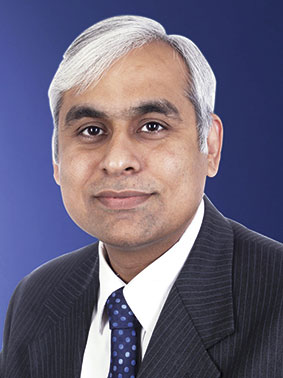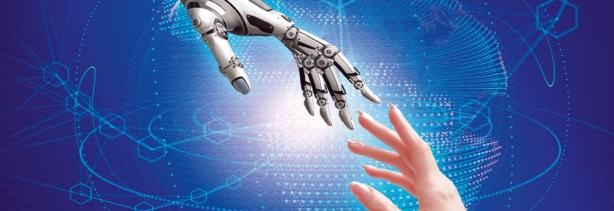
For centuries, humans have maintained the supremacy on earth by continuously learning and acquiring new skills and capabilities. Our brain is one of our biggest assets. The human race has constantly been working on sharpening the brain and expand its capabilities. In parallel, we have built powerful computers, which have the capability of learning new things in the same way as our brain learns. We are about to witness an inflexion point where we may be able to truly converge our biology with the technology we are creating. With this breakthrough, we will be able to connect our bodies and brain to computers and will increase our capabilities superlatively!
Where do you see the world of technology taking us in the next 30 years?
Technology, as we all know, is constantly evolving and dramatically impacting our personal, social and corporate life. Over the last couple of decades, we have witnessed never-seen-before novel technologies ranging from the Internet, social media, mobility, data science and cloud computing to nanotechnology. In the future, particularly over the next 30 years, we can well expect biological and technological evolution to advance hand-in-hand, thereby impacting human beings themselves.
According to Ray Kurzweil, renowned author, computer scientist, futurist, and the director of engineering at Google, in the near future humans and machines may become indistinguishable from one another in a relationship he calls hybrid thinking. Essentially, this theory suggests that in the future we will be able to increase our brain’s power instantaneously by accessing the processing power of cloud computing. This could be further enabled by injecting nanorobots in our brain, which can act as interfaces between human brain cells and digital brain cells. As an example, training videos or Cognitive Behavioral Therapies (CBTs) may be uploaded to users’ brains as and when required.
In my view, in the next 10 years, we will witness a large number of “thought-controlled” devices in the market, initially targeted towards people with disabilities and then being applied to a number of different use cases. Within the next 20 years, with the advent of pervasive and high-speed networks and human-like sensors which will be connected to our brain at all times, we will be able to control “our world” from the comfort of our personal digital studio without moving an inch. In the next 30 years, we will have studied and mapped the brain so well that there will be special purpose brain-computer interfaces available, which will enable instant transfer of knowledge and skills.
This sounds fascinating, but we do not see any of this happening right now. Are there any examples of Machine Learning technologies / Artificial Intelligence being applied?
Yes, absolutely, Machine Learning (ML) and Artificial Intelligence (AI) are already being applied in a multitude of ways. In fact, ML and AI are the fundamental concepts underlying hot domains such as IoT (Internet of Things) and big data. From driverless cars and robots that support and perform critical surgeries to IBM’s Watson, the next wave of technology is likely to be all about machines becoming smarter, intelligent and transforming the way we live, work and play.
The personal technology space has great examples which underpin how ML and AI are being used now. Whether it is Apple’s Siri, Microsoft’s Cortana or Google’s Now – all of them attempt to continuously learn the behavior of the user and recommend what should be done in the future.
Another classic example is the way in which Natural Language Processing (NLP) and speech recognition have evolved over time. Language is probably the single biggest barrier when it comes to communication between people. Google pioneered with Translate, which started with translating written text into another language, and then evolved into speech recognition, where it could translate spoken text into another language of choice. Currently, this has been taken to a whole different level by Microsoft’s Skype, where speech can be translated from one language to another in real time. Within the next 10 years or less time, most mobile communication devices will be available pre-built with real-time language translation modules, which will automatically learn and detect languages and speech patterns of all the communicating parties. These devices will be capable of carrying out translation and related tasks in real time when we communicate with others: the users do not need to bother about the language – the machine intelligently translates on its own. The language barrier between human beings, as we know now, will simply cease to exist.
A lot seems to be happening in the personal technology space. Will we see enterprises also adopting these truly disruptive technologies in times to come?
There is no doubt about that, enterprises are run by human beings after all. At the very extreme, cultivating on the concept of hybrid thinking, if we assume that a majority of the brain function, at least in terms of information processing and thought processes, will be non-biological, then human beings may well evolve into a different species. At the very least, technologies could drive all-around optimization and smooth functioning of business processes wherein decision-making and implementation might become location and time independent.
Technologies, such as Robotic Process Automation (RPA) and AI, may continue to drive the “cognitive revolution” even in the future. With automation becoming rapidly more intelligent and affordable, and the global supply of talent smaller and more expensive, we can fairly assume that in 30 years’ time, three out of ten corporate jobs will be done by a robot. Digital talent could become so scarce that one may need to compete with the likes of Amazon and Google to get it. This is not a hypothesis on the distant horizon – it could be a reality in just 10 years; some of it has already begun. Enterprises will have to adapt to such conditions in order to survive.
Technology can really be more powerful than we would like it to be. Do you see any issues with such a fast paced and uncontrolled development?
The effectiveness of the human and digital brain co-existing is based on the presumption that we are able to decipher the human brain completely. In the event that we are unable to decipher the impact of technology on the human brain coherently, there are bound to be setbacks.
Hybrid thinking postulates the ability to read each other’s thoughts; this can affect privacy and interpersonal relations between humans. Additionally, increasing adaption of technology impacts human emotions. Even today, the response one garners on social media websites affects one’s self esteem. If the majority of what makes us human beings becomes machine-driven, it definitely impacts our behavior. For example, if we can scale AI at will, instantaneously, the question that arises is: whose will is it exactly? If a human brain and machine brain interact, would this not mean we are interfacing between two very different personalities? Who creates the will? Is it the human or the machine?
In summary, it is us, human beings, who are driving the evolution – both for our kind and technology. Advancements in technology will have dark sides too, but like always, what makes us human is the positivity in us – the ability to look at the brighter side. We can endeavor to do the same here and hope technology progresses in leaps and bounds – always striving to make our lives easier, simpler and better. After all, what can beat the fact that technology created will be by humans, of humans, and for humans, at least at this point in time?
Akhilesh Tuteja heads the IT Advisory practice of KPMG in India. He has over 18 years of experience in management consulting and IT consulting. He has directed and managed numerous consulting engagements including strategy, operations and performance monitoring of companies in the technology sector. Akhilesh is a keen lover of technology and is passionate about use of appropriate technology to bring out substantial business benefits. He is currently self-learning implications of nano-technology.



